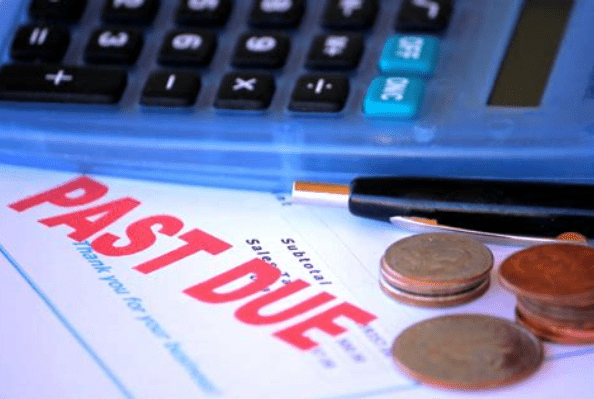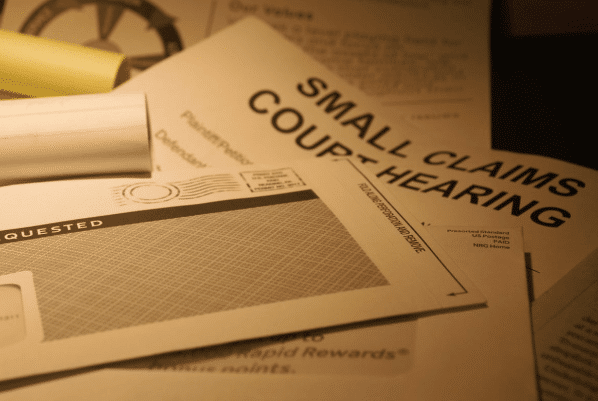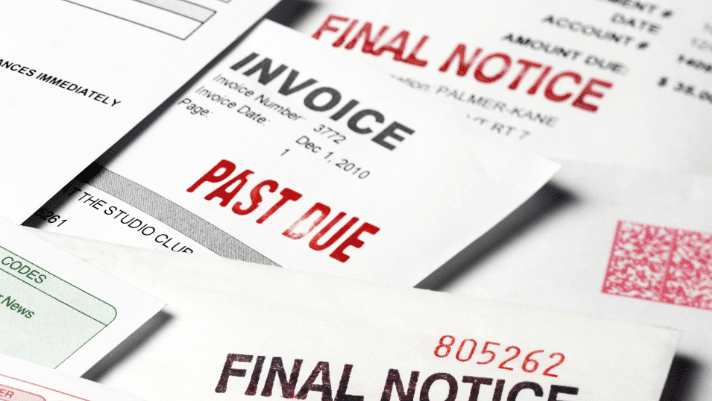Facing a debt collection lawsuit in Montana can be daunting, but you don’t have to navigate it alone. ZumaZip is here to guide you through the process of responding to a summons for debt collection in Montana. Our platform simplifies the complexities of legal procedures, allowing you to confidently address the lawsuit with ease and precision. Let ZumaZip help you take control of your legal situation and protect your rights.
Facing a debt collection lawsuit in Montana can be overwhelming, but it’s essential to understand that you have options. When served with a summons for debt collection, it’s crucial not to ignore it in the hopes that the issue will simply disappear. Ignoring the summons could result in a default judgment being issued against you, essentially guaranteeing the debt collector’s victory in the lawsuit.
Instead, take proactive steps to address the situation. Filing a response with ZumaZip allows you to effectively respond to the allegations outlined in the lawsuit. By filing an Answer, you have the opportunity to contest any errors or inaccuracies in the debt collector’s complaint.
For instance, if you believe you don’t owe the debt in question, filing a response enables you to present your defense and bring any discrepancies to the court’s attention. Additionally, responding to the lawsuit gives you the opportunity to file a counterclaim if necessary. Don’t let fear or uncertainty prevent you from taking action. With ZumaZip, you can confidently navigate the legal process and protect your rights.
Montana deadline for answering a debt collection summons
For Montana residents, you must file a written answer within 21 days after being served. These days vary depending on whether the hearing occurs in a small claims court or a district court.
A small claims court determines cases involving debt collection for debts valued at $7,000 and below. A district court judge hears a debt collection case valued between $7000-$25,000. Also, if the deadline coincides with a holiday or weekend, it will be pushed to the next business day.
When you receive the summons, check to find out how long you have to file an Answer. The summons and complaint will also contain details about the plaintiff, their demands, and the amount you owe.
Missing the deadline will prompt the plaintiff to file for a default judgment. A default judgment renders any of your efforts at winning the case fruitless. When this happens, the court may decide to:
- Levy your bank accounts
- Garnish your wages
- Auction your assets
- Among others
Even if you decide to reach out to the creditor outside the court, you’ll still need to file your Answer with the court clerk. If you do not know where to start, ZumaZip offers a great way to file an Answer just by clicking a button!
Respond to a debt collection lawsuit fast with ZumaZip.
Montana answer to summons forms
You can download the Answer to the summons form from the Montana Judicial Branch website. The document requires you to fill in personal information such as name, contact information, and location.
Filing an Answer with the court requires you to pay a legal fee. But if you cannot afford the payment, you may apply for a waiver. To do so, you have to fill a ‘Statement of Inability to Pay’ form and mail it to the court clerk before the deadline. You can download the form here.
The court will evaluate your application and decide whether to waive the fee. After the court waives the payment, you can then file your written Answer to the summons. A counterclaim is another way to answer a summons for a debt collection lawsuit in Montana. This kind of Answer challenges the claims made by the plaintiff if you believe the case against you is false. You also need to notify the plaintiff about the counterclaim.
Given that counterclaims usually involve many legal tussles, you may need legal advice to determine if it’s the best shot at winning the case. To file a countersuit, download and fill a counterclaim form from Montana’s judicial branch website.
Use ZumaZip to make the right defense and win your case.
Answer filing fees in Montana
To fill an answer for a summons of debt collection in a small claims court, you will pay $15 to the court. For district courts, the filing fee is $30. Counterclaims are more costly to file, and you may end up paying up to $1200 depending on the case and debt amount.
Steps to respond to a debt collection case in Montana
Even if the claims stated in the summons and complaints are untrue, you must respond with a written Answer to the court. Be sure to also send a copy of this Answer to the plaintiff directly or through their attorney.
Let us look at the steps you need to follow when responding to a debt collection lawsuit:
1. Draft your answer
The Montana Judicial Branch website has a sample answer document that you can use to fill in the required details. A satisfactory answer document should contain the following information:
- Your information, such as name, contacts, address, county, and city.
- Information on the plaintiff and the legal company representing them.
- Court details, such as name, location, and address.
- Case details, which include the case number and docket.
- Whether you deny or admit the claims made by the plaintiff.
Answer each issue of the complaint
Provide answers for every claim made by the creditor in the complaint document. The best way to do this is to study the Complaint, identify each claim and address the issues in each paragraph.
There are three ways in which you may respond to the claims, as outlined below.
Admit
You can list down all the paragraphs with factual claims. For instance, you can write, “these paragraphs in the Complaint are true,” then list them down.
Deny
Alternatively, you may highlight all the false allegations. For instance, you can say, “these paragraphs in the Complaint are false,” then write them down. Additionally, if you are unsure about information written in any section, feel free to deny it. Note that failure to deny a claim is considered an admission of responsibility for the debt.
Admit and deny
Some paragraphs will have true allegations, while some may be questionable or completely untrue. In that case, you may write, “all sections of this paragraph are true except this and this part.” Likewise, you can say, “all accusations in this paragraph are false except this and this part.” Then, list down the sections in question.
Make the right affirmative defense with ZumaZip and win in court.
2. Assert affirmative defenses
After accepting or refuting the claims, the next step is giving reasons, known as affirmative defenses, to convince the judge to rule the case in your favor. Assert affirmative defenses only if you can prove it in court.
Asserting affirmative defenses that cannot be proven during trial increases your chances of losing the entire case. The following are some common affirmative defenses you may write in your Answer. Please select the one that applies to your specific situation.
You are not the debtor
Debt collectors sometimes unknowingly sue the wrong person. This error may be a result of identity theft or incorrect record-keeping. If you can prove you are not the debtor during the trial, you may win the lawsuit.
Wrong amount of debt
If the debt indicated in the summons and Complaint is incorrect, you can use it as an affirmative defense against the plaintiff.
Unidentified creditor
Debt collection agencies buy debts from creditors and present them as their own. If you can prove that you don’t have any relationship with the plaintiff, the judge can rule the case in your favor.Breach of contract
The creditor may have breached the terms of your contract leading to termination of their services. In that case, you can tell the court you cannot pay for a terminated contract. However, you must present evidence that the agreement was officially closed.
Already litigated case
If the case is pending in another court, or judgment for the same subject had already been passed, this could be a great defense during the trial. But you need to indicate the case number, and the court involved to prove your defense.
You already filed for bankruptcy
If you filed for bankruptcy and the case is in trial or the court has declared you bankrupt, you will be exempted from paying the debt.
Statute of limitations invalidates the case
The statute of limitations sets the time during which a creditor can legally sue you for a debt. After the period has elapsed, the creditor cannot collect their debt through the legal process.
In Montana, the statute of limitations for debt collection cases lies between three and ten years. If a plaintiff sues you after the expiry of the statute of limitations, you could use that as an affirmative defense.
Military exemption
If you are actively serving in the military or have just retired, you can ask the court to grant you a stay. A stay halts the case and gives you more time before trial. Although it does not remove the lawsuit, it provides you with more time to pay the debt.
Protect your property with ZumaZip.
3. File the answer with the court and serve the plaintiff
The last step is to mail the Answer to the court. Some courts accept in-person delivery of the Answer through the office of the court clerk. Also, it is important to send a copy of the Answer to the plaintiff directly or through their attorney.
Given that debt collection laws are quite complicated and you may not know how to file your Answer correctly, ZumaZip offers a better alternative. This web application helps you file your Answer in easy steps, which an attorney then reviews before being sent to the plaintiff and court.
Statute of limitations on debt collection in Montana
| Montana Statute of Limitations on Debt | |
| Debt Type | Deadline in Years |
| Written agreements and liabilities | 8 |
| Oral agreements and liabilities | 3 |
| Mortgage | 8 |
| Medical | 8 |
| State Tax | 10 |
| Auto Loan | 4 |
| Credit Card | 5 |
| Judgment | 10 |
Source: Findlaw | |
The statute of limitations on debt refers to how long the creditor can legally sue you to pay what you owe them. Once this time has elapsed, the creditor can still use other ways to seek their payment but cannot take you to court.
The statute of limitations in Montana varies with the kind of agreement, whether written or verbal. The statute of limitations for written agreements and liabilities in Montana is eight years. On the other hand, oral liabilities and obligations have a 3-year statute of limitations.
The statute of limitation also varies depending on the kind of debt. For mortgage and medical debts, the statute of limitations is eight years. The state of Montana can sue you for state tax debt within ten years, while an auto loan debt is valid for four years.
In addition, the statute of limitations for credit card company debt is five years. If the plaintiff sues you and the court passes a judgment, the statute of limitations starts afresh. The creditor has ten years from the time of judgment to pursue the debt. This statute applies to the judgment of decrees in a court in any state.
Another thing to note is that once you start partial payments on a debt you’ve been sued for, the statute of limitations begins to count from scratch. Having an old debt (one has surpassed the statute of limitations) does not mean the debt collector cannot pursue their debt; it only means they cannot file a debt lawsuit in court. The debt may be time-barred, but the creditor can use other means to reach you.
Don’t let debt collectors push you around. Respond with ZumaZip.
Montana legal aid organizations
When the court serves you with summons and complaint papers, you can choose to represent yourself or consult an attorney. The latter helps you make informed choices.
With legal help, you can answer the summons confidently. It also raises your chance of winning the lawsuit.
If you cannot afford paid legal services, government and non-profit organizations offer free legal services in Montana. You can find these pro bono legal aids across several counties in the state.
Here is a list of some great legal aid organizations in Montana:
- Montana Legal Services Association
- Cascade County Pro Bono program
- Fifth Judicial district Pro Bono program
- Northwest Area bar Association Pro Bono program
- Gallatin County Pro Bono program
- Western Montana Bar Association Pro Bono program
Key takeaways
Getting sued in court for an alleged unpaid debt can be extremely stressful. Do not give up hope or throw your hands up in despair. There are simple steps you can take to formally respond to the debt collector’s summons and complaint.
Answering a summons for debt collection in Montana gives you a chance to fight the debt. When arguing your defense, you should consider including one, or a combination, of the following responses:
- Answer to every Complaint; you can admit or deny the claims.
- Include affirmative defenses, which give you a fighting chance to win the case.
- File the Answer with the court and send a copy to the plaintiff.
What is ZumaZip?
ZumaZip is a convenient solution designed to streamline your response to a debt collection lawsuit. Here’s a breakdown of what you can expect when you use ZumaZip:
Firstly, you’ll access our user-friendly web application, which guides you through the process step by step. You’ll be prompted to answer a series of questions related to your specific situation. Once you’ve completed the questionnaire, you have the option to either print out the finalized forms and mail them to the appropriate courts yourself, or you can opt to utilize ZumaZip’s services to file them on your behalf. Additionally, if you choose this option, an attorney will review your document for added peace of mind.
If you’re seeking guidance on how to effectively respond to a debt collection lawsuit, ZumaZip can provide the assistance you need. Feel free to explore our FAQs for more information on what ZumaZip has to offer.
What if I haven’t been sued yet?
If you’ve only received a collections notice, but not a lawsuit, the best way to respond is with a Debt Validation Letter. When a debt collector contacts you in any way, whether it’s by phone or mail, you can respond by formally requesting a debt validation with a Debt Validation Letter . This letter notifies the collector that you dispute the debt and forces them to provide proof you owe the debt. They can’t call you or continue collecting until they provide validation of the debt. This flowchart shows how you can use a Debt Validation Letter to win.
Get started with a Debt Validation Letter here.
How to Answer a Summons for debt collection in all 50 states
Here’s a list of guides on how to respond to a debt collection lawsuit in each state:
- Alabama
- Alaska
- Arizona
- Arkansas
- California
- Colorado
- Connecticut
- Delaware
- Florida
- Georgia
- Hawaii
- Idaho
- Illinois
- Indiana
- Iowa
- Kansas
- Kentucky
- Louisiana
- Maine
- Maryland
- Massachusetts
- Michigan
- Minnesota
- Mississippi
- Missouri
- Montana
- Nebraska
- Nevada
- New Hampshire
- New Jersey
- New Mexico
- New York
- North Carolina
- North Dakota
- Ohio
- Oklahoma
- Oregon
- Pennsylvania
- Rhode Island
- South Carolina
- South Dakota
- Tennessee
- Texas
- Utah
- Vermont; Vermont (Small Claims court)
- Virginia
- Washington
- West Virginia
- Wisconsin
- Wyoming
Guides on how to beat every debt collector
Hey there! Facing off against a debt collector can feel like a daunting challenge, but fear not! We’re here to help you navigate through it all with our handy guides designed to assist you in beating every debt collector you encounter. Whether you’re facing a new lawsuit or dealing with a persistent collector, we’ve got your back. Stay positive, stay informed, and let’s tackle this together!
- Absolute Resolutions Investments LLC
- Accredited Collection Services
- Alliance One
- Amcol Clmbia
- American Recovery Service
- Asset Acceptance LLC
- Asset Recovery Solutions
- Associated Credit Services
- Autovest LLC
- Cach LLC
- Cavalry SPV I LLC
- Cerastes LLC
- Colinfobur
- Covington Credit
- Crown Asset Management
- CTC Debt Collector
- Cypress Financial Recoveries
- Delanor Kemper & Associates
- Eagle Loan of Ohio
- Educap
- Estate Information Services
- FIA Card Services
- Forster & Garbus
- Freshview Solutions
- Fulton Friedman & Gullace LLP
- Harvest Credit Management
- Howard Lee Schiff
- Hudson & Keyse LLC
- Integras Capital Recovery LLC
- Javitch Block
- Jefferson Capital Systems LLC
- LVNV Funding
- Mannbracken
- Mariner Finance
- Medicredit
- Michael J Adams PC
- Michael J Scott
- Midland Funding LLC
- Mullooly, Jeffrey, Rooney & Flynn
- Mountain Land Collections
- MRS Associates
- National Collegiate Trust
- Nationstar Foreclosure
- Northstar Capital Acquisition
- NCEP LLC
- NRC Collection Agency
- OneMain Financial
- Palisades Collection LLC
- Pallida LLC
- Paragon Revenue Group
- Pinnacle Collections Agency
- PMAB LLC
- Portfolio Recovery Associates
- Provest Law
- PYOD LLC
- Reunion Student Loan Finance Corporation
- Revenue Group
- Regents and Associates
- RSIEH
- Salander Enterprises LLC
- Second Round Sub LLC
- Security Credit Services
- Sherman Financial Group
- Suttell and Hammer
- T-Mobile
- Transworld Systems
- Tulsa Teachers Credit Union
- UCB Collection
- Velo Law Office
- Velocity Investments
- Waypoint Resource Group
- Weinberg and Associates
- Wolpoff & Abramson
Settle your medical debt
Having a health challenge is stressful, but dealing medical debt on top of it is overwhelming. Here are some resources on how to manage medical debt.
- Am I Responsible for My Spouse’s Medical Debt?
- Do I Need a Lawyer for Medical Bills?
- Do I Need a Lawyer to Fight Medical Bill Debt?
- Does Bankruptcy Clear Medical Debt?
- How Much Do Collection Agencies Pay for Medical Debt?
- How to Find Medical Debt Forgiveness Programs
- Is There a Statute of Limitations on Medical Bills?
- Medical Debt Statute of Limitations by State
- Summoned to Court for Medical Bills — What Do I Do?
- Summoned to Court for Medical Bills? What to Do Next
Stop calls from Debt Collectors
Do you keep getting calls from an unknown number, only to realize that it’s a debt collector on the other line? If you’ve been called by any of the following numbers, chances are you have collectors coming after you, and we’ll tell you how to stop them.



































